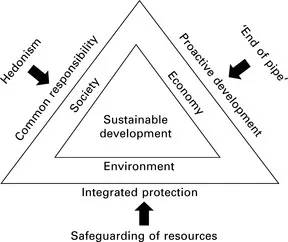
Handbook of Sustainable Textile Production
Marion I Tobler-Rohr
- 520 Seiten
- English
- ePUB (handyfreundlich)
- Über iOS und Android verfügbar
Handbook of Sustainable Textile Production
Marion I Tobler-Rohr
Über dieses Buch
Textile products are produced, distributed, sold and used worldwide. A quantitative assessment of sustainability in the textile manufacturing chain is therefore extremely important. The Handbook of sustainable textile production is a compilation of technical, economical, and environmental data from the various processes in this chain. This authoritative reference work provides a detailed study of the sustainable development of textiles.The book opens with an introduction to the topic. Chapters define the principles of sustainability and its use in legislation and industry before going on to investigate the impact of textiles throughout the supply chain, starting with the raw fibre through to fabric production, consumption and disposal. Textile process technology and methods for specifying quality and functions in textile products in order to reduce textile waste and improve sustainability are also examined. A series of Life Cycle Assessments (LCAs) carried out in the European textile industry are investigated. These studies comprise a range of processes from cotton growing, spinning and weaving to the recycling of textiles. The book concludes with a discussion on sustainable textiles from a product development and marketing perspective.With an internationally recognised expert author, the Handbook of sustainable textile production is a valuable reference tool for academics and students as well as for companies across the textile supply chain concerned with developing a sustainable environment, from fibre manufactures and designers to regulatory bodies.
- A detailed, quantitative assessment of the sustainable development of textiles
- Provides a useful compilation of technical, economical, and environmental data from various processes in the textile manufacturing chain
- Chapters define the principles of sustainability and its use in legislation and industry, textile process technology, the impact of textiles throughout the supply chain, raw fibre through to fabric production, consumption and disposal
Häufig gestellte Fragen
Information
Sustainable development (SD) as a goal in production, marketing and trade
Abstract:
1.1 A holistic concept
1.1.1 Sustainable development and its goals
